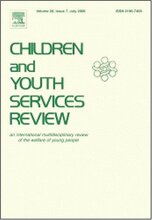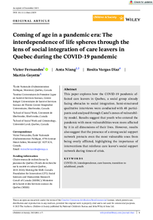Demographic Data
|
Sources: World Bank, UNICEF, UNDP HDR 2015, DHS 2013 |
Displaying 631 - 640 of 14551
Daniela Mamaliga, Director of Partnerships for Every Child, presents the findings and conclusions of a comprehensive 2022 financial assessment conducted by CTWWC in six residential institutions. The financial assessments aimed to inform political decisions on the future of the six institutions, including their transformation/reorganization plans. Ms. Mamaliga highlights that though the average annual cost for caring for a child is increasing in all six institutions, even as number of children and staff is decreasing in some of them.
“When we talk about equity and efficiency and what is right for children, when we provide services to families and children, we need to make sure that we are not just investing wisely, but that we are reaching
As an experienced social worker and practice lead at Social Work Scotland, Vivien Thomson shares valuable insights underscoring the importance of investing in the social service workforce to drive meaningful care reform. Drawing from lessons learned in Scotland's Getting it Right for Every Child (GIRFEC) policy framework, Ms. Thomson, illuminates the critical role of social workers and the need to empower them as the glue that holds together multi-agency teams.
Former World Bank Economist and President of Maestral International, Philip Goldman, makes a compelling, data-driven case for the need for a paradigm shift in how Moldova approaches the financing of care and protection of its children.
This is a systematic review of literature published from 2002 to 2022 to assess the differences in outcomes of children and youth who were adopted out of foster care compared to children and youth in foster care (CYFC) who were in other permanency placements (reunified, aged out, long-term foster care). The review yielded twelve (N = 12) studies from Sweden, the United Kingdom, and the United States.
This article analyzes the integration process of children returned from ISIS territory in three regions of the Russian North Caucasus from where the largest number of ISIS fighters with Russian citizenship originated. Following the concepts of “reintegration of returned migrants” and “cultural citizenship”, it explicates the role of key actors in the processes of adaptation and integration of children and their families, as well as analyzes the nature of the barriers they overcome to restore their lost civil status and identity.
This book review is written by Elizabeth Faulkner of author Kate Kathryn E.
This paper explores how the COVID-19 pandemic affected care leavers in Quebec, a social group already facing obstacles to social integration.
Medics working in the Gaza Strip are using a specific phrase to describe a particular kind of war victim. "There's an acronym that's unique to the Gaza Strip, it's WCNSF - wounded child, no surviving family - and it's not used infrequently," Dr Tanya Haj-Hassan who works with Doctors Without Borders told BBC News.
Survivors of institutions run by Catholic diocese recall litany of sexual abuse as bankruptcy process keeps documents hidden



